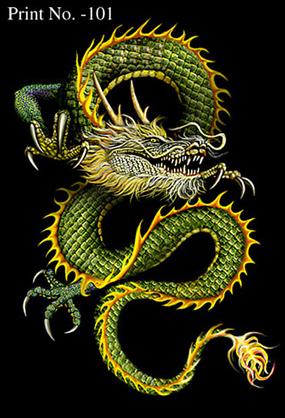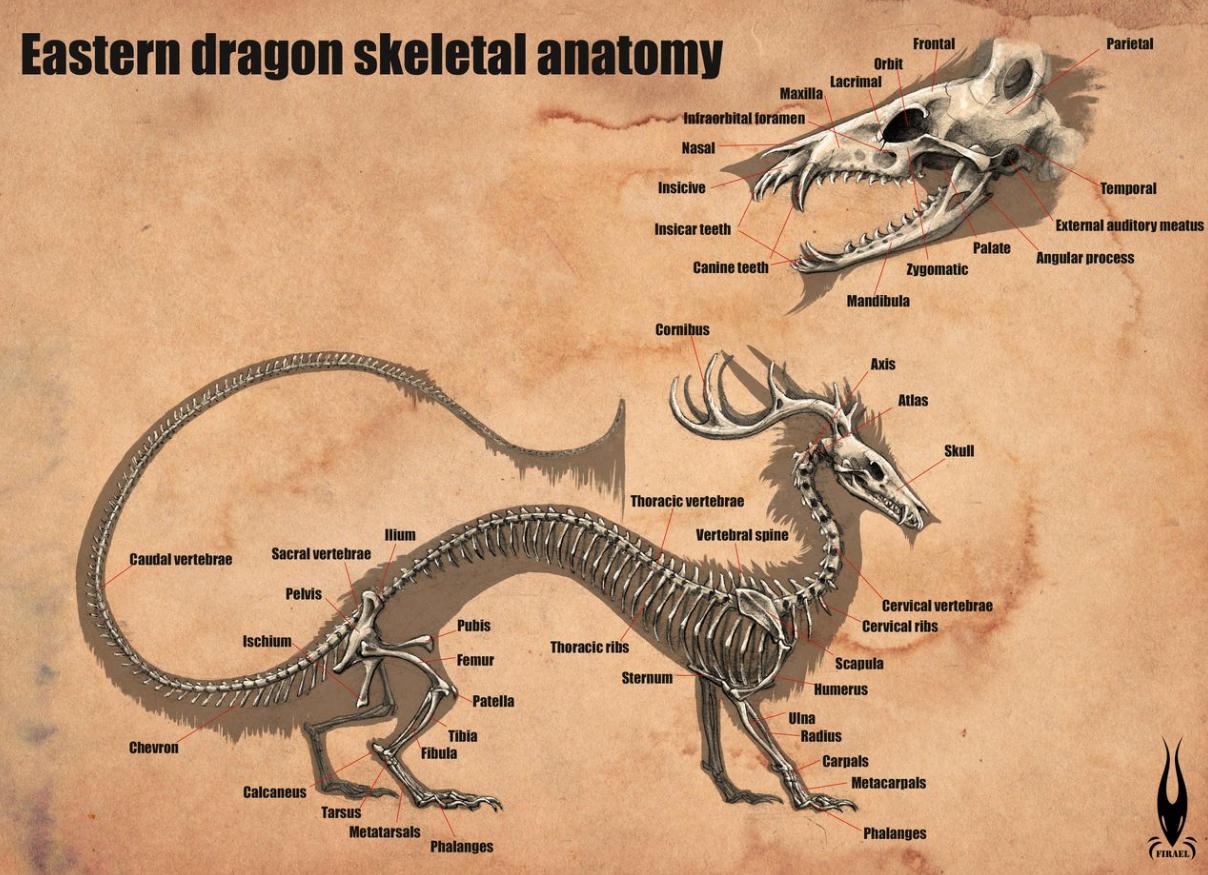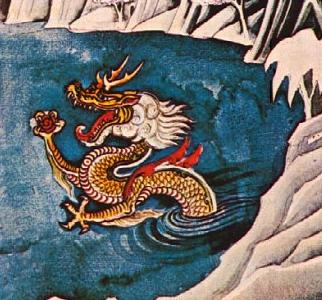Eastern dragon anatomy page migrated from the old site.
Check out the Western dragon anatomy page while you’re here!
Eastern Dragon Anatomy

Overview
1. When it comes to Eastern dragon anatomy, their skeletal structure is longer and thinner than their Western counterparts.
2. Medium-sized head, very long neck, short legs, small hips and a long tail.
3. Skeletal structure allows it to twist and turn like a snake.

4. Bones are not hollow, but thin, so they are also light.
5. Eastern dragons do not have wings. However, this doesn’t mean can’t fly. They use magic to accomplish that very purpose.
6. Extra decoration for the Eastern dragon comes in a large fluffy mane. This is more developed in males.
Similarities
1. Both Eastern and Western dragons have strong, large muscles in the tail.
2. Both are omnivorous.
3. They have:
a) canines and incisors that are long and razor sharp, for tearing and ripping.
b) molars for chewing, instead of just swallowing their food whole.
4. Dragons, as a species, can hear over a very wide frequency range.
External Body
All dragons are covered with scales.
Smaller Eastern dragon species do not have scales. Instead, they are covered with leathery skin. Usually, they are brightly coloured.
Gender & Reproduction
1. Males have wavy, concave steep horns. Females have straight noses, round manes, thin scales and a strong tail.
2. Males usually have clubs in their tails. Females hold fans.
3. Females have neater manes. They are seen as more balanced than the rigid mane of the males.
4. Females tend to be smaller sized.
5. Females have a thicker tail. This “thickness” is throughout the body, as the body is serpentine.

Once a male and female mate, the eggs are laid near water.
It may take up to 1000 years for the eggs to hatch. When they hatch, water runs from the eggs and the parents call out.
The cry of the male makes the winds rise. The cry of the female calms them. This sends the local weather conditions into chaos. Torrential rains with lightning and thunder will cause the eggs to break open.
References:
- Dragons of the Far East (defunct)
- The Circle of the Dragon
- Sommerland: Dragon Biology (defunct)


1 comment
Comments are closed.